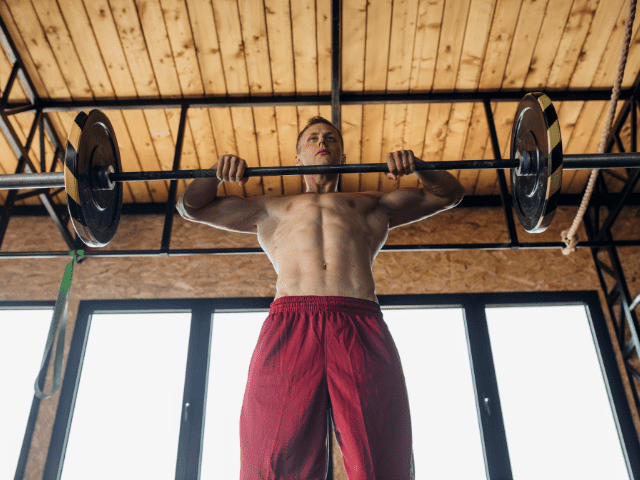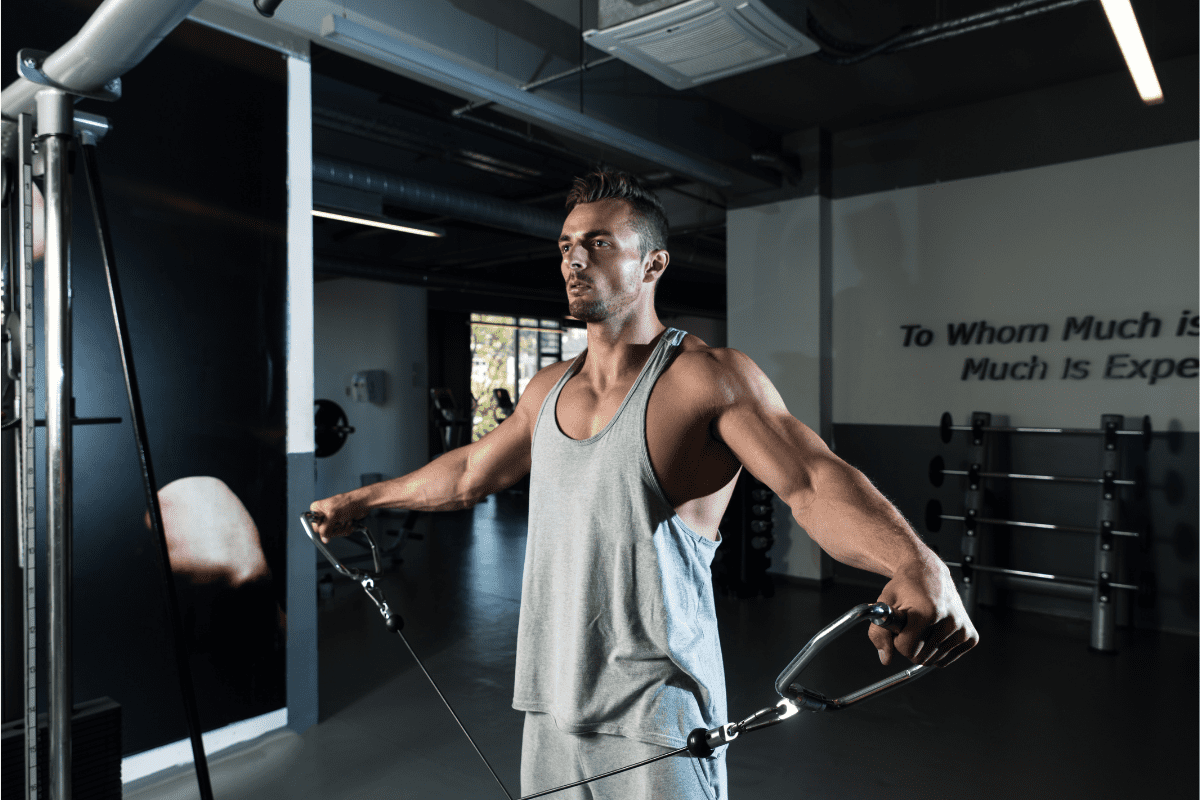Cable Lateral Raises (How To, Muscles Worked, Benefits)
The Cable Lateral Raise is a popular exercise used to strengthen the muscles in the shoulders. This exercise involves using a cable machine to lift weights out to the sides of the body, working the lateral deltoids, as well as the upper back and traps.
In this guide, I’m going to teach you how to do Cable Lateral Raises including important coaching points, muscles worked and a few alternatives as well.
How To Do Cable Lateral Raises
Equipment Needed
- Cable Pulley Machine
How To
- Start by adjusting the cable machine to the appropriate weight and attaching the handle to the low pulley.
- Stand with your feet shoulder-width apart and reach across your body to grasp the handle with your palm facing down*.
- Keeping your elbow slightly bent, lift the weight out to the side of your body until your arm is parallel to the floor.
- Slowly lower the weight back to the starting position and repeat for the desired number of reps.
Coaching Points
*Cable Lateral Raises can be done one arm at a time or both arms at the same time if you have a dual tower. The instructions above are assuming one arm at a time, but instructions are basically the same if doing both arms simultaneously.
To keep the focus on the medial delt, make sure to keep your palms down at the top of the movement. Many lifters like to pull back, instead of lift straight out to the sides, which brings the stronger muscles of the upper back into play.
Benefits
Cable Lateral Raises, also known as Cable Side Raises, offer a number of benefits including:
- Isolating the Lateral Delt: This exercise specifically targets the lateral deltoids, improving their strength and stability.
- Injury Prevention: By strengthening the shoulders, Dumbbell Lateral Raises can help to reduce the risk of injury, particularly in sports that involve overhead movements and repetitive motions.
- Developing Upper Body Strength: The Lateral Raise can be utilized in a complete strength and conditioning program to improve overall strength and athletic performance.
How Many Reps?
Dumbbell Side Raises are always done in relatively high rep ranges. I generally program Side Raises as 2 to 3 sets of 10 to 15 reps per set.
READ MORE –> Lateral Raise vs Rear Delt Raise
Muscles Worked
Cable Lateral Raises work both the Delts and the Traps, but their primary focus is on the medial deltoids.
- Deltoid (Medial, Anterior and Posterior heads)
- Supraspinatus
- Trapezius (if dumbbells are lifted slightly higher than shoulders at the top)
Cable Lateral Raise Alternatives
If you’re unable to do Cable Lateral Raises, for whatever reason, here are a couple of alternatives you can replace them with.
Need more options? Here are 10 of my favorite Cable Lateral Raise alternatives to grow your shoulders.
Dumbbell Lateral Raise
If you simply don’t have a cable machine, you can replace Cable Lateral Raises with Dumbbell Lateral Raises.
Keep the movement exactly the same in either case.
Barbell Upright Row

This isn’t an exact replacement, but Barbell Upright Rows are another good exercise that works the trapezius and deltoids.
So, if all you have to work with is a barbell (which I did when I first started my garage gym), Barbell Upright Rows are a suitable alternative.

Online Strength Programs
- 1-on-1 Online Coaching
- Sports Performance Programs for Football, Basketball, Soccer & More
- Programs for Former Athletes (Legends) Who Still Want to Train Like Athletes
- Programs for Adults Who Want to Get Healthy (and look great at the beach!)
- Use Code “HB10” to Get 10% Off Today
More Links and Info
Horton Barbell has a growing Exercise Library including many more Upper Body Exercises.

